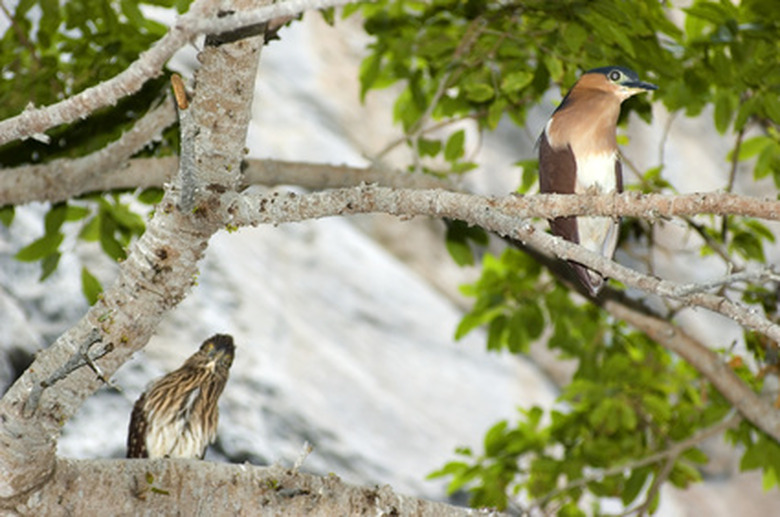Taiheiyo Evergreen Forest Animals
The Taiheiyo Evergreen Forest is located in southern Japan and is classified as a critical-to-endangered biome. This forest is a temperate broadleaf and mixed forest about the size of the state of Florida that covers plains, hills and low mountains. The biome is under threat due to urbanization – Japan's largest cities, including Tokyo, Yokohama and Osaka are located in this region – as well as from introduced plant and animal species, and conversion to agricultural land. There are still many beautiful indiginous species to be found in the Taiheiyo Evergreen Forest.
The Fairy Pitta
The Fairy Pitta
The fairy pitta, or Pitta nympha, is a small, brightly colored bird that lives in northeast Asia and calls the countries of Japan, South Korea and China home. This 16- to 19.5-centimeter-tall bird has a green back, blue tail, chestnut crown and a buff-colored belly with a red stripe. The fairy pitta has been classified by the International Union for Conservation of Nature (IUCN) as a vulnerable species because its population is declining rapidly as a result of deforestation in its breeding range. Fairy pittas also are being trapped and sold as cagebirds.
Japanese Night Heron
Japanese Night Heron
At 49 centimeters tall, the Japanese night heron, or Gorschius goisagi, is a small, stocky heron with a red-brown head and neck and chestnut-brown back and tail. This nocturnal bird breeds in Japan, spends the spring and summer in Russia and South Korea, and winters in the Phillipines. With an estimated population size of less than 1,000 adult birds, the Japanese Night Heron has been classified by the IUCN as a endangered species. There are several factors that are influencing the decline in numbers of this particular species. Like the fairy pitta, deforestation is an issue. Changes in traditional agricultural practices are resulting in dense undergrowth in the forests of the Japanese night heron's habitat, which reduces the suitability of these habitats as feeding grounds. This small heron is hunted by human beings, and its nests are preyed upon by an increasing crow population that thrives in urban areas.
Odaigahara Salamander
Odaigahara Salamander
The Odaigahara salamander, or Hynobius boulengeri, is a terrestrial, freshwater salamander living in the forests, rivers and streams of the Taiheiyo Forest. Some varieties are known to secrete toxins when scared as a defense against predation. Native to Japan, the population of these little animals is declining in the areas of Kyushu and Honshu, but the Shikoku population seems abundant and stable. The IUCN has classified the Odaigahara salamander as vulnerable because its population is fragmented, and several of these fragmented populations are decreasing in number. Their decreasing population size is related to habitat loss, as well as the pet trade.
Cite This Article
MLA
Brooks, Lizzie. "Taiheiyo Evergreen Forest Animals" sciencing.com, https://www.sciencing.com/taiheiyo-evergreen-forest-animals-7353144/. 22 November 2019.
APA
Brooks, Lizzie. (2019, November 22). Taiheiyo Evergreen Forest Animals. sciencing.com. Retrieved from https://www.sciencing.com/taiheiyo-evergreen-forest-animals-7353144/
Chicago
Brooks, Lizzie. Taiheiyo Evergreen Forest Animals last modified March 24, 2022. https://www.sciencing.com/taiheiyo-evergreen-forest-animals-7353144/
